Drones Are Taking Over Like It’s (Not) 1984 – And We’re Excited
Drones get a bad rap, and we get it. If you’ve spent any time in your life reading about the Orwellian dystopia 1984, then you’re probably paranoid like the rest of us about the ‘Thought Police’ spying on your every move with their intimidating telescreens and loudspeakers. But like all things in life, every new technology can have both its negatives and positives.
Yes, drones have allowed us to do some rather questionable things in times of war, but what about all of the remarkable ways that we can use drones to improve the human experience?
We’re not here to talk about another doomsday situation of drones taking over the world. They already are, and we’re excited for what the future holds with more drones in it.
Amazon’s Prime Air Leads the Way
If you missed the news, back on December 7th, 2016 Amazon Prime Air successfully completed their first test run of Prime Air, their new drone delivery service. This all took place in the vast, open fields of Cambridge, England, where Amazon is currently testing their service with a small group of customers.

No wonder Amazon started Prime Air in Cambridge, look at all of those wide, open fields. (Source: Amazon via AP)
Here’s the cool thing, it only took 13 minutes from when the customer placed their order until it was delivered by the first Prime Air drone. Keep in mind, all Prime Air drones only have a carrying capacity of 5 lbs, so this lucky Amazon customer made out with a sweet Amazon Fire TV stick and a bag of popcorn. Sounds like a movie night.
Naturally, there are some limitations to Amazon’s Prime Air delivery service at the moment, including:
- UK customers only. Only a whopping two Amazon customers in the UK can use Prime Air, and they just so happen to live the closest to Amazon’s UK warehouse.
- Weather permitting. Weather is a huge factor for these drones, and Prime Air can only operate in the best of conditions.
- Daylight hours. While Prime Air can deliver seven days a week, regulations only permit the flight of drones during daylight hours.
Amazon made a video to show off its first delivery, check it out below. One thing we noticed while watching is that the drone requires some sort of marker to know where to drop off a package. How this might work in a dense, urban setting is another matter altogether. But maybe drone’s will only be needed for rural areas?
Of course, all of this progress didn’t happen overnight. Amazon first unveiled their delivery drone service concept back in 2013, and since then they have been battling regulations left and right to send some packages into the sky.
Recently, Amazon nailed a deal with the Civil Aviation Authority in the UK that allows them to fly drones without requiring a visual line of site. Making this happen in the United States is another matter altogether, which brings us to the complex issue of drone regulation.
The Dizzying Maze of Drone Regulation
Here’s the real problem with regulating drones – You’re now adding thousands of new flying machines into an existing national airspace, and you need a way to make sure everything doesn’t go to hell up there. Due to their small size, drones are a lot harder to detect, and considering that they fly in a space reserved for helicopters, recreational airplanes, and crop dusters, you’re bound to have some collision issues without the right management systems in place.
In the United States alone, there are more than 19,000 airports and 600 air traffic control operations (source), and the thought of adding thousands of drones to this mix can be overwhelming. There has been some progress made to regulate and manage a new network of drones, including:
- New frameworks. The Federal Aviation Administration (FAA) recently released a framework that allows for the commercial use of drones that weigh less than 55 lbs. The only setback? They can only be flown during the day, and need to remain within an operator’s visual line of sight.
- New avoidance systems. PrecisionHawk, a provider of safety systems for drones, unveiled their Low Altitude Tracking and Avoidance System. This system is built directly into a drone’s circuits and provides flight planning, monitoring, and avoidance, all powered over 2G cellular networks.
- New traffic management systems. NASA is also doing similar work, partnering with Google and Amazon to create their UAS Traffic Management System. This will allow a drone to be tracked in real-time, while also providing a communication system to drone operators about weather troubles, restricted airspaces, and routing.
Consumer Drone Regulation
As great as these advancements in management systems and frameworks have been, there’s still the issue of all those consumer drones flying about haphazardly. In 2014, there were over 190 issues reported to the FAA about drones crashing, almost hitting other aircraft, and entering restricted airspaces.
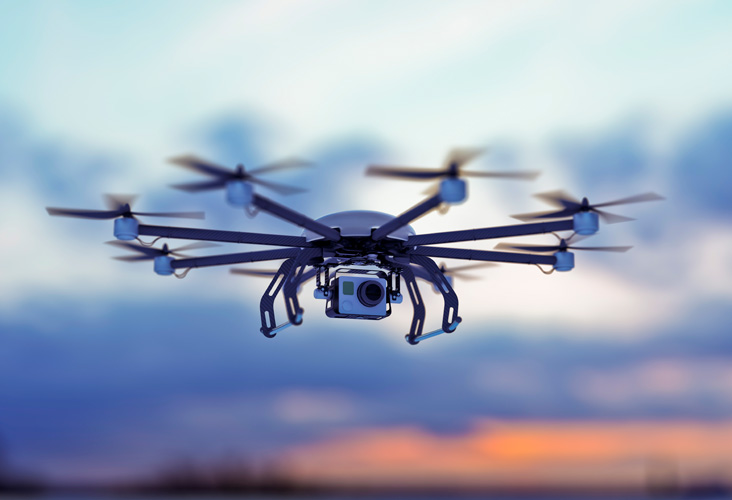
Civilian drones are on the rise, and so are the regulations behind them. (Image source)
Is there a solution to this? On October 19th, 2015 the US Department of Transportation announced that it would start requiring hobbyists and commercial users to register their drones in a national registry. And back in June of 2015, the Consumer Drone Safety Act was introduced which required drone manufacturers to start including safety technologies in every drone, including collision avoidance.
Needless to say, the regulation of drones is an entirely new challenge that governments and businesses are all trying to navigate together. And without a reliable system in place, there’s going to be some major gridlock in our skies if we don’t integrate drones safely into our existing aerial highways.
The Complex Anatomy of a Drone
Regulations aside, you might be wondering what makes up all of the sophisticated gadgetry that makes these machines possible. While many drones first started in the depths of military research labs as Unmanned Air Vehicles or UAVs, manufacturing efficiencies and cost reductions have now made drones financially accessible to the average-Joe. We’ll be looking at the most popular type of drone to show off what’s inside, the quadcopter.
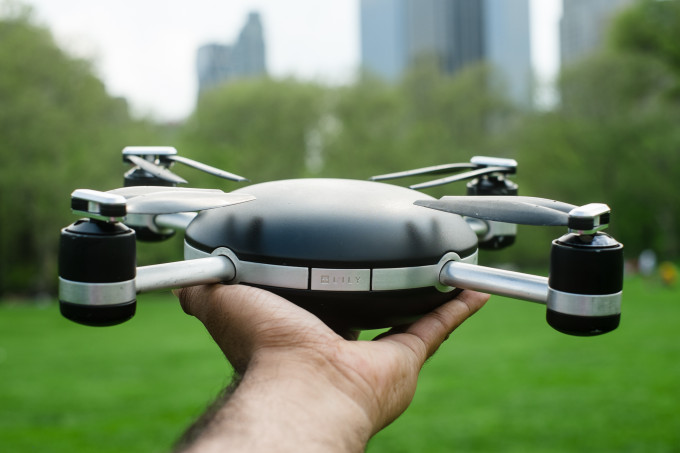
Here’s the Lily Drone, one of many quadcopters. This one follows you around thanks to a Bluetooth signal. (Image source)
The Frame
It all starts with the frame, and like the wooden studs that hold up a house, this piece of a drone kept all of the components and board intact and protected from the elements. The quadcopter drone has a unique frame, consisting of four arms that all connect to a central motor system.
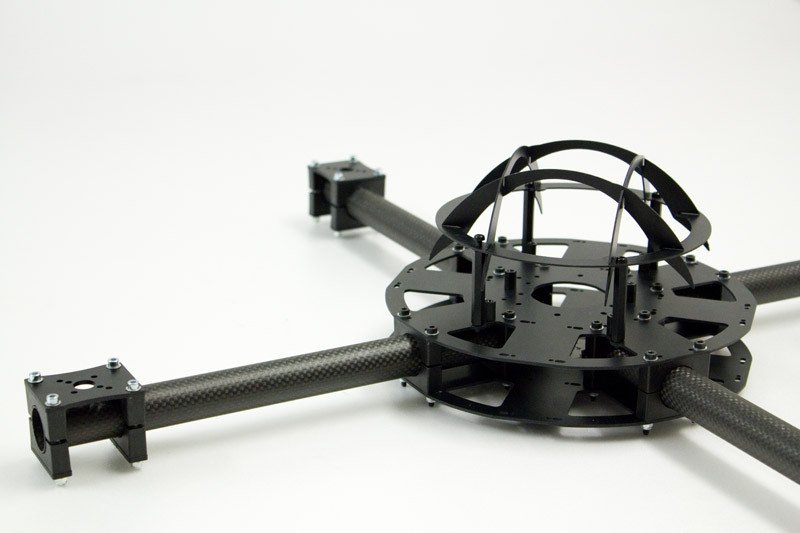
Here’s a quadcopter frame similar to what you’d find in the Lily drone. (Image source)
The Motor
You’ll find the brushless DC electric motor powering most quadcopter drones these days. And if your hobby is tinkering with RC helicopters, airplanes, or cars, then you’ll feel right at home working with these new quadcopter drones.

One of the many brushless DC motors available for quadcopter drones. (Image source)
The Power
Most drones are equipped with a Lithium Polymer battery. Why Lithium? It’s a lot lighter and cost effective and offers way better performance than any other battery. One thing to note, the battery is the most expensive part of a drone, and will often account for 10% of its total cost.
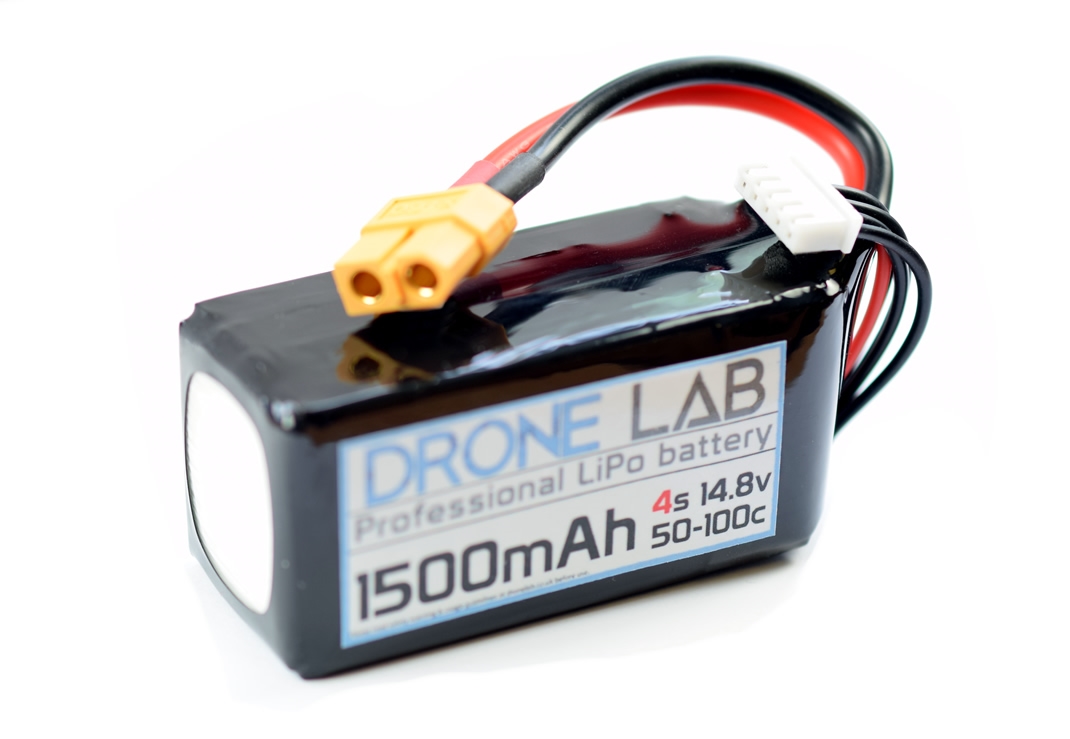
A premium Lithium Polymer battery, this one is built for quadcopter racing. (Image source)
The Brains
Many drone flight controllers will use a microprocessor from some ordinary families, including 8051, PIC, or ARM to do all of their heavy calculations. Inside these chips, you’ll have some common peripherals, including 12-bit ADC, serial communication interfaces, pulse width modulation, timers, and more.
The Agility
You’ll find accelerometers used in every drone, allowing it to measure movement in the X, Y and Z planes. This will allow a drone to understand what direction its orientation in, and is one part of keeping a drone stabilized.
Drones also include a gyroscope, which provides 3 to 6-axes of navigational information directly to an operator. This is what allows a drone to hover in perfect stability to capture those beautiful panorama shots, and also allows it to make those aggressive turns without breaking a sweat.
The Communication
Lastly, we’ve got the communication hub. Radio Control (RC) is still the most popular choice for civilian drones. But with newer advances in controller technology, we’re beginning to see the use of low energy Bluetooth and even WiFi to send and receive data between a drone and PC/smartphone.
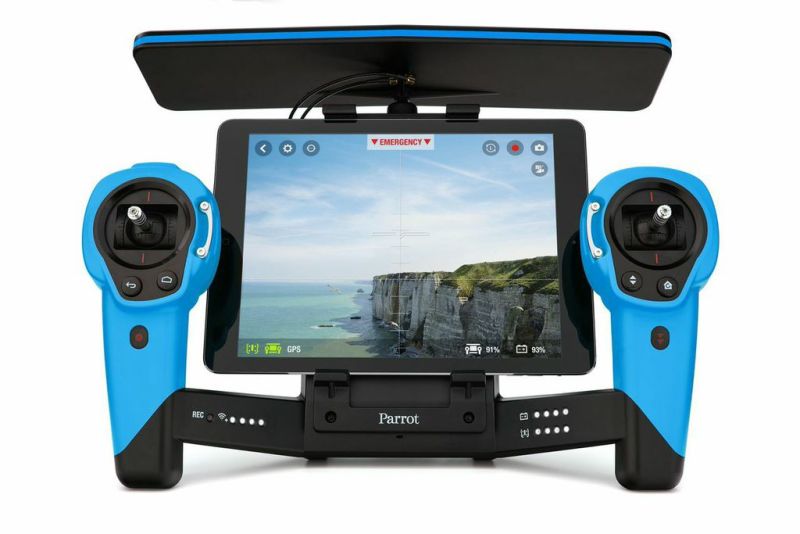
Drone controllers are getting pretty complex these days; this one lets you see from your drone’s point of view. (Image source)
As you can see, drones are super advanced pieces of machinery, bringing together the latest microprocessor technologies, motors, and wireless communications that allow us to do some amazing things with them. With all of this brilliance packed into such a small package, you’ve got to wonder, is there anything a drone can’t do?
5 Ways That Drones Will Change the Future
With a projected growth rate in 2020 in the millions, we’re bound to find a ton of new applications that aren’t 1984 related to drones. Here’s just a few that are already underway or upcoming that we’re excited about:
Delivering Medicine
Drones are already being developed by the Division of Health Sciences and Technology at Harvard-MIT to provide vaccines and other medical supplies to remote areas in developing countries. Imagine being able to provide villages all around the world, even those that don’t have accessible roads. How much could we improve the human quality of life with this kind of reach?
Discovering History
Archeologists have already used drones to uncover Native American villages in New Mexico. How? By strapping some heat-sensing cameras to their drones. These thermal images allow archeologists to see what’s going on beneath the desert floor without needing to dig up any dirt. Could drones help us find some hidden histories of humanity in locations that we can’t access with foot and shovel?
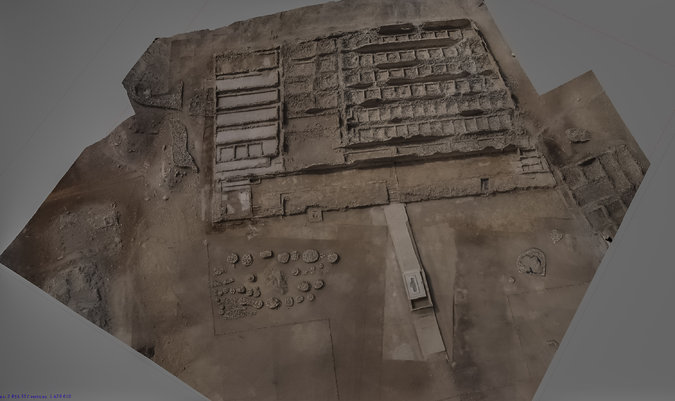
These archaeologists are using drones in Peru to map out ancient hilltop ruins. (Image source)
Beaming Internet Access
Both Facebook and Google have been taking the lead on this, and the social media giant recently built a full-sized version of its solar-powered drone. This thing has a huge wingspan, as large as a Boeing 737, and will circle the Earth’s stratosphere, sending down laser beams to provide internet access to even the most remote corners of the world. How will the world change when internet access and information is freely available to everyone?
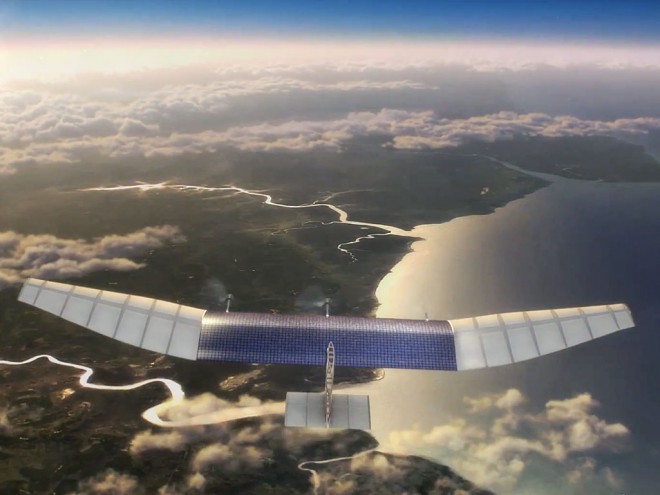
Look at the wingspan on that thing! This Facebook drone beams internet down to even the most remote corners of the world. (Image source)
Growing Crops
In Japan, we’re seeing helicopter-style drones made by Yamaha being used to spray crops with fertilizers and pesticides. This is a fantastic alternative to airplanes, as these drones can remain low on the ground and work way more efficiently, spraying specific crops as needed. Could drones revolutionize the way we approach agriculture? What if you could use drones to also monitor the health of plants?
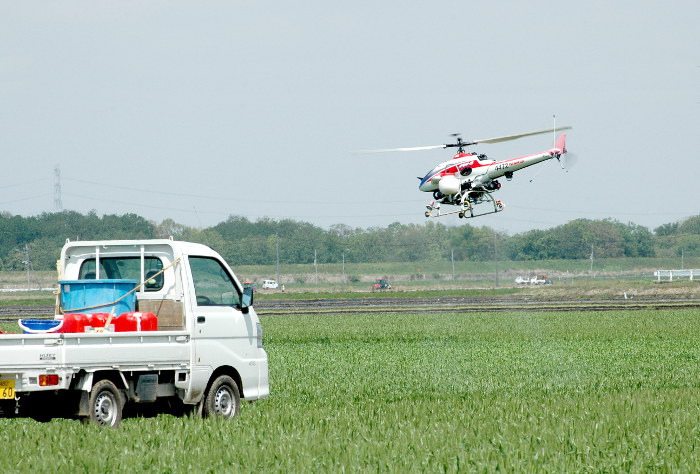
Here’s a drone helicopter being used in Japan to spray crops with fertilizers and pesticides. (Image source)
The 1984 Stuff – Surveillance
Back in May of 2016 Illinois state police were finally allowed to operate drones to take photos of crime scenes and accidents. In the same month, the FAA also teamed up with CNN to use drones to film news footage. Could this be our entrance into the Orwellian world of 1984, where our every move is watched? We’d prefer to take ‘the glass is half full’ approach. If drones can help us to solve crimes faster, and maybe even deter it with better surveillance, then all the better.
We’re Droning On
So what does the future hold for drones? It’s a little hard to tell at the moment, but all signs are pointing in the direction that drones will take over when we’re ready for them. Personally, we’re super excited for this. Drones aren’t all the doom and gloom that 1984 portrays. And if we can deliver more food, better medicine, and better information to everyone around the world, then who knows how this can improve the human experience?
This future that we’re excited for might take a while to manifest, though. Our transportation regulations are going to need a major overhaul to accommodate the thousands, and maybe millions of drones that might be populating our skies in the future. Until that time arrives, we’ll keep hoping that the San Francisco TacoCopter will start delivering some delicious tacos in other cities!
Ready to start designing the next evolutionary drone today? Get started with EAGLE Subscription.
